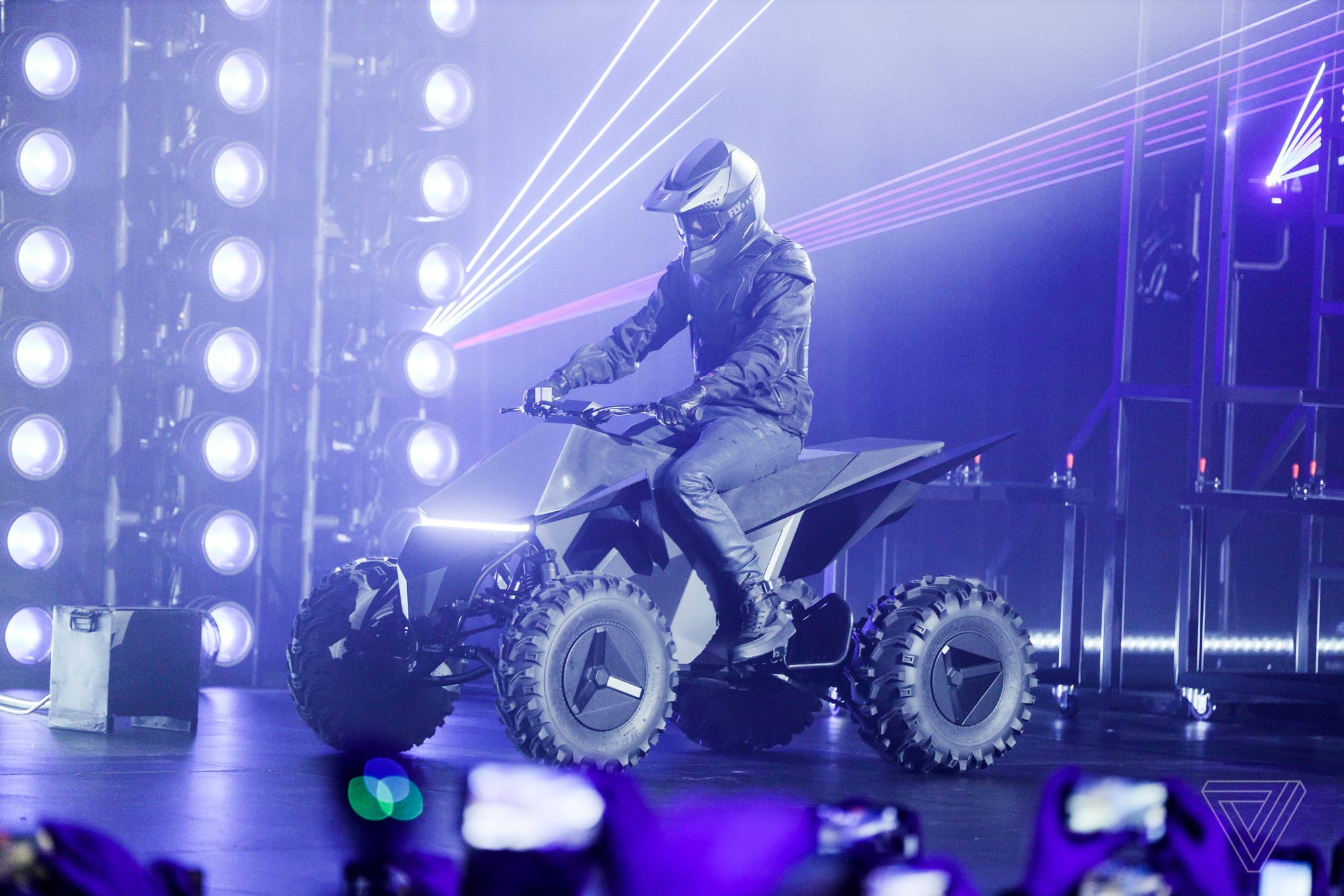Tesla is a talking point for uncountable things these days. Production targets, questionable financial practices, the never-ending Cybertruck discussion; if it’s something related to Tesla, it’s in the news. But amidst the unveiling of the aforementioned pickup, the electric automaker showed a “prototype” for an electric all-terrain-vehicle. And I thought to myself, “About damn time!” Something like this could, and should work. But Tesla could do even better: they could– and should– sell an electric side-by-side. Why, and what would the Tesla off-road vehicles need to succeed? Let’s dive in.
Once upon a time the three-wheeler was a thing. Then common sense finally mated with physics and people transitioned to four wheelers. But then very little happened for decades. Sure, ATVs got infinitely more capable and better to ride, but there wasn’t much in the way of change. It wasn’t until side-by-sides gained popularity that a true market disruptor showed its face. Since then it has been more of the same: incremental changes to existing formulas. Add more suspension, comfort and power. Rinse and repeat.

Short of range anxiety issues, an electric off-road-vehicle would be absolutely fantastic. Again, aside from the issue of range, electric drivetrains are extremely well suited to off-roading. They provide spectacular, instant low-end torque. They are durable and carry fewer moving parts than their gas-powered counterparts. And, since there’s no intake and no exhaust, it in turns means there’s no snorkel required, no airbox to clean, and no worry about flooding the engine or starving it of air.

Source: Teslarati
But we have to address the range. Most ATV riders don’t put on a huge number of miles in a day; they usually put around their farm or run a few trail miles and call it quits. That said, Tesla would have to sell multiple tiers of power and battery range. ATV manufacturers sell multiple engine sizes, and Tesla sells multiple power/range-rated cars. It only makes sense to offer a few range options: 25 miles, 50 miles, 100 miles. Power and acceleration would relate accordingly. Give the machine a way to fast-charge on a 110V outlet so it can be re-”fueled” on longer trips. And, of course, make it possible to charge directly in the back of the Cybertruck when on the way to the trail.

Source: Endgadget
Tesla could even offer a sport-oriented, two-wheel-drive machine and a proper four-wheel-drive utility quad. Hell, the “prototype” was just a Yamaha Raptor with Tesla bodywork and an electric drivetrain. Offer both, to dominate the track and the trail. Sell it with wholly unique lighting and plastics treatments; the look of the “prototype” would work just fine.

Concerns? Weight is of the enemy, but that’s part of the game when it comes to any electric, battery-only powerplant. The dealer network would need to start from the ground up. And obviously methods of and time it would take to charge could be cause for worry.
What Tesla desperately needs to do, though, is offer an electric side-by-side. Polaris’ RZR has been dominating the SxS market ever since its debut. There were other before, like the Yamaha Rhino and Kawasaki Mule, but Polaris brought buyers an all-new side of these machines. Miniature trophy trucks, they were decent at work-related tasks and excellent in the woods. They could keep up with true, handlebar-operated ATVs but provided more comfort and safety for those who needed it. It was an all-new category and reports show Polaris as having 40-50% of the market share in 2018. In just over ten years they went from a near-unknown to being a household name, synonymous with the type of vehicle.

And because the RZR has opened up a new market, Tesla can jump on this by bringing out an electric SxS. Yes, Polaris already sells an electric Ranger UTV. And yes, there are a few from off-brands and a few on the horizon as well. But no widespread electric side-by-side has come to market, and it certainly hasn’t been adopted just yet. Tesla has the ability to make the change and capture the electric SxS market.

Source: NewAtlas
As I’ve mentioned in the past, electric off-road vehicles could be great for preserving the environment in which they are being used (i.e., by not emitting pollutants upon the areas in which the ATV is ridden). But the ATV market is extremely set in its ways. Hard to sway, unwilling to make drastic changes. It’s not unlike the full-size pickup market. And now, with the Cybertruck on the horizon and Tesla having something resembling a solid network surrounding itself, it’s time for a new disruptor to shake things up. Tesla’s done it before with the electric car so it’s entirely possible that they could do the same again with the all-terrain-vehicle and side-by-side markets. The sooner, the better.


Leave a Reply